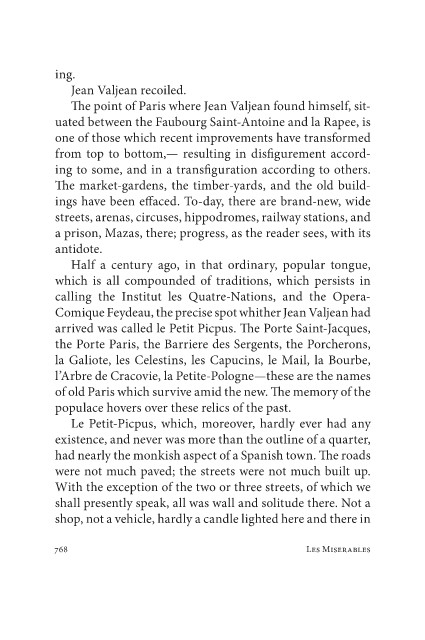Page 768 - les-miserables
P. 768
ing.
Jean Valjean recoiled.
The point of Paris where Jean Valjean found himself, sit-
uated between the Faubourg Saint-Antoine and la Rapee, is
one of those which recent improvements have transformed
from top to bottom,— resulting in disfigurement accord-
ing to some, and in a transfiguration according to others.
The market-gardens, the timber-yards, and the old build-
ings have been effaced. To-day, there are brand-new, wide
streets, arenas, circuses, hippodromes, railway stations, and
a prison, Mazas, there; progress, as the reader sees, with its
antidote.
Half a century ago, in that ordinary, popular tongue,
which is all compounded of traditions, which persists in
calling the Institut les Quatre-Nations, and the Opera-
Comique Feydeau, the precise spot whither Jean Valjean had
arrived was called le Petit Picpus. The Porte Saint-Jacques,
the Porte Paris, the Barriere des Sergents, the Porcherons,
la Galiote, les Celestins, les Capucins, le Mail, la Bourbe,
l’Arbre de Cracovie, la Petite-Pologne—these are the names
of old Paris which survive amid the new. The memory of the
populace hovers over these relics of the past.
Le Petit-Picpus, which, moreover, hardly ever had any
existence, and never was more than the outline of a quarter,
had nearly the monkish aspect of a Spanish town. The roads
were not much paved; the streets were not much built up.
With the exception of the two or three streets, of which we
shall presently speak, all was wall and solitude there. Not a
shop, not a vehicle, hardly a candle lighted here and there in
768 Les Miserables

